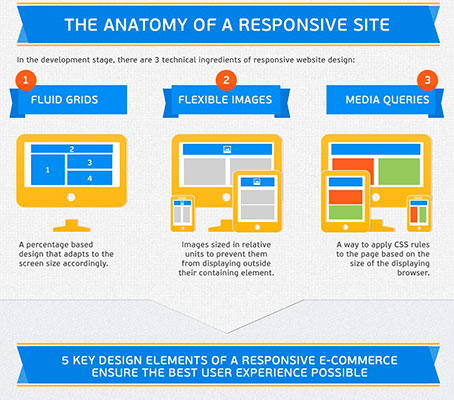Fundamental Elements Of Web Design: Standards For Establishing A User-Centric Site
Fundamental Elements Of Web Design: Standards For Establishing A User-Centric Site
Blog Article
Material By-Le Gammelgaard
When it involves internet site style, making certain user-friendliness is key. From responsive design to structured navigating, every aspect plays an important function in creating a site that caters to your audience's needs. Yet what concerning the better details that can make or break a user's surfing experience? Stay tuned as we uncover some often-overlooked pointers that can raise your website's usability to the next level, making it truly attract attention in the digital landscape.
Relevance of Responsive Layout
Responsive design is a vital facet of modern web site development. Ensuring your web site is receptive methods that it can adapt to various screen dimensions and gadgets, offering a smooth experience for customers.
With https://charitydigital.org.uk/topics/topics/10-essential-charity-seo-tips-to-get-your-website-found3-6168 increasing use of mobile phones and tablets to access the net, having a responsive design is crucial for getting to a wider target market. It assists in improving user experience by making your site very easy to navigate and continue reading any kind of gadget.
Furthermore, receptive layout can positively impact your online search engine positions, as search engines like Google focus on mobile-friendly sites. By having a receptive design, you're also future-proofing your web site, as new gadgets with differing screen sizes continue to arise.
Simplify Navigation Structure
To enhance individual experience and promote very easy access to information on your website, simplifying the navigation structure is critical. When developing your site, focus on developing a clear and intuitive navigation menu that helps visitors locate what they're seeking swiftly.
Restriction the variety of menu products to the fundamentals, organizing associated pages with each other to prevent frustrating customers. Usage descriptive labels that plainly indicate the content of each page, making it easier for users to understand where each link will take them.
Think about executing dropdown food selections for subcategories to avoid cluttering the major navigation bar. In https://what-is-content-marketing95062.blogunok.com/31384974/designing-the-ultimate-site-a-thorough-process , include a search bar prominently on the web page for customers that prefer looking for details info.
Focus on mobile responsiveness in your navigation style to ensure very easy accessibility on all devices.
Enhance Web Page Lots Rate
Improving page lots rate is crucial for keeping visitors on your internet site. Slow-loading web pages discourage users and can lead to high bounce prices. To enhance page load speed, beginning by optimizing pictures. Compress pictures without jeopardizing high quality to minimize their documents dimensions.
Furthermore, make it possible for internet browser caching to keep frequently accessed sources locally, quickening load times for returning visitors. Minify CSS, JavaScript, and HTML data by removing unneeded personalities, comments, and format, boosting lots speed.
Think about utilizing a material distribution network (CDN) to distribute your website's content across numerous web servers worldwide, decreasing latency for users accessing your site from various areas. Finally, limit making use of third-party scripts and plugins, as they can considerably affect tons times.
Conclusion
To conclude, by including receptive layout, simplifying navigation, and enhancing web page load rate, you can develop a straightforward site that attract a broader audience and enhances customer experience. These essential elements make certain that site visitors can quickly access and navigate your website across different devices, causing enhanced engagement and contentment. By focusing on look at this now , you can develop a successful website that maintains customers coming back for even more.
